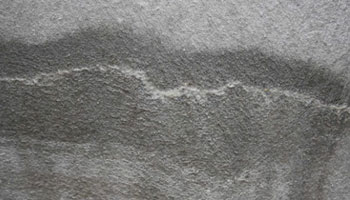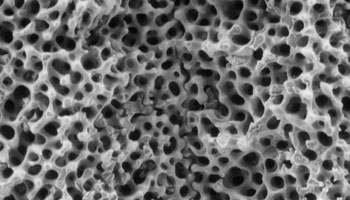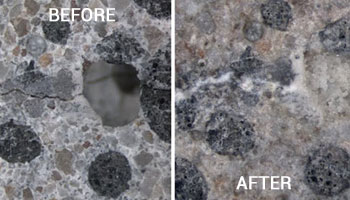You have no items in your shopping cart.
Post Requirement
Did you know that a type of bacteria called mineral-producing bacteria could help mend micro-cracking in concrete? Well, bacteria help in construction too.
After undergoing a lot of research Dr Henk Jonkers, a microbiologist has developed self-healing concrete that could become the building material for the future.
The main object of self-healing concrete is to increase concrete's durability to perceive better longevity of buildings.
What is Bio- Concrete or Self-healing Concrete?
Concrete is the most important building material used in construction which can withstand compressive forces but not tensile forces. Because of low tensile strength, when it is subjected to tension, it starts to crack. This is why it is reinforced with steel to withstand tensile forces, know more about Steel Reinforcement in Construction.

"Self-healing concrete is nothing but concrete which can retain itself to the original state when it is subjected to cracks." Bio-concrete is a material that will biologically produce minerals like limestone with the help of bacteria present in it, which will heal cracks that appear on the concrete surfaces.
In ancient times, non-hardening cement is widely used in construction that is why the structures have remained strong for a long time even though they have less maintenance. The self-healing concept is developed and implemented by Ancient Romans, and the live example of their architecture is Pantheon.

Autonomous healing fills cracks through non-hydrated cement particles, which is a natural process of repairing cracks that can occur in the presence of moisture or water. In present-day constructions, usage of non-hardening cement is less and consequently natural or autonomous healing effect is diminished.
Why should we need Self-healing Concrete?
Nowadays, the ultimate goal is to develop a technology that can produce a sustainable and eco-friendly structure with more endurance. But due to unskilled labour and quick processing of construction, most of the structures are prone to cracking.
As time goes on, water seeps into the walls and degrades the concrete and corrodes the steel reinforcement, which decreases the age of the concrete and mortar state.

Repairing cracks on conventional concrete structures usually take more time in which we have to apply mortar on the damaged surfaces. Sometimes, we have to embed mortar into the existing structure with metal pins to prevent it from falling.
All these methods are expensive, as it is complicated to gain access to the repaired surface whether it is in underground or great height.
How does it Work?
This concrete consists of a special type of bacteria genus Bacillus along with calcium lactate, nitrogen and phosphorus as ingredients. These bacteria can sleep in the concrete for up to 200 years.

If the concrete structure gets damaged, the bacteria will rise and multiply when the water drools into the structure. Once the bacteria awaken, they consume oxygen and start feeding on the calcium lactate, and converts soluble calcium lactate into insoluble limestone. The generated limestone compresses the cracked surface and seals it.
The add up advantage during this bacterial conversion is it helps to increase the durability of steel-reinforced concrete structures.
Disadvantages
• It is not suitable where higher compressive strength is needed, such as in tall buildings.
• It is not cost-effective. The cost of self-healing concrete is two times the ordinary concrete.
Check Out: Light Emitting Cement for Smart Constructions
Technically Reviewed by Rajesh Pagadala, MS, Founder & CEO - BuildersMart. Written by Vani paspula, Content Manager.
Vani Paspula
Pravin Kadam
posted on Oct 19, 2020 11:04:17 AMThank you so much.














vm
posted on Dec 31, 2020 10:24:33 AM